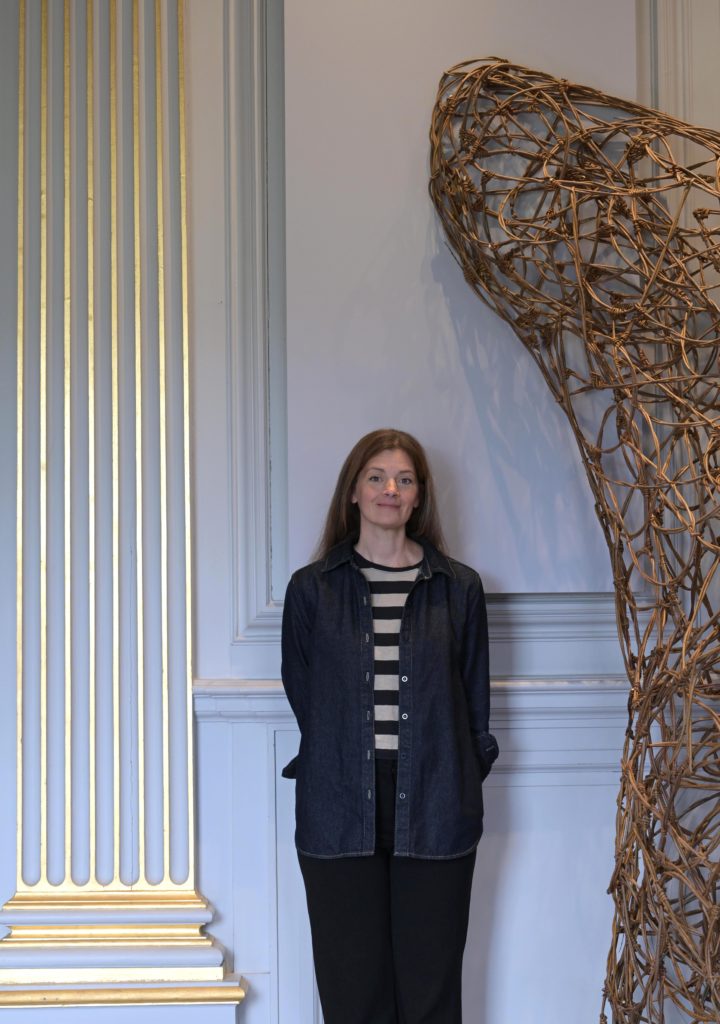
Willow sculptor Laura Ellen Bacon at her Whispers Of The Wilderness exhibition. Picture: National Trust/Anthony Chappel-Ross
DO Laura Ellen Bacon’s willow sculptures draw nature into Beningbrough Hall’s Reddihough Galleries and Great Hall or reach out to the grounds beyond the walls?
You decide, when encountering the National Trust’s exhibition, Whispers Of The Wilderness: Exploring Wilderness Gardens.
On show until April 12 2026, this immersive exhibition invites visitors to explore the dynamic relationship between art and nature through contemporary sculpture, historic artefacts and interactive experiences.
Curated to coincide with garden designer Andy Sturgeon’s transformative work on Beningbrough’s Wilderness Garden, the exhibition features the Derbyshire artist’s large-scale willow works, whose organic, flowing forms bring the essence of the Wilderness Garden indoors, evoking movement, energy and the untamed beauty of nature.
“It was a joy to discover Beningbrough across various seasons while designing and making the work,” says Laura, who has complemented her sculptures with new drawings in graphite on paper, inspired by Beningbrough and existing sculptures, with such titles as Bud, Unfurl, Whispers and Emergence, plus her original exhibition sketchbook.
“My imagination has drifted easily in the gentle landscape and within the lamp-lit interior views. Beningbrough is a place for daydreams.”
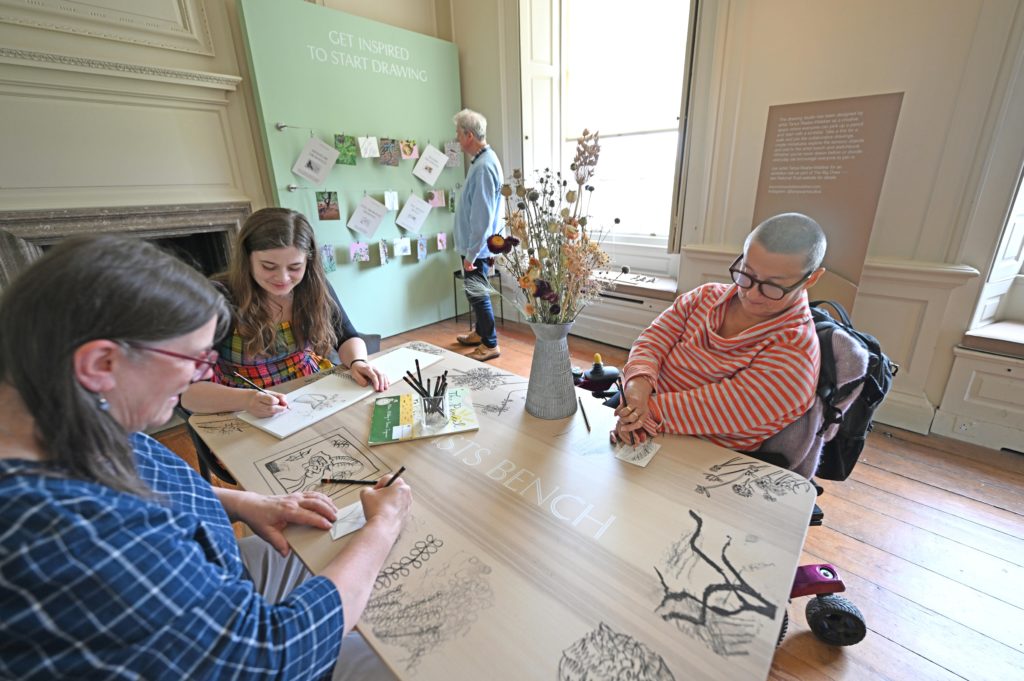
Drawing in the Drawing Studio with artist Tanya Raabe-Webber at Beningbrough Hall’s Whispers Of The Wilderness exhibition. Picture: National Trust/Anthony Chappel-Ross
Utilising willow from Musgrove Willows, in Somerset, exhibition highlights include two woven sculptures, entitled Whispers, in the Great Hall that spill over plinths – the size of the plinths on the 1841 map of Beningbrough’s Wilderness Garden – suggesting wild grasses swaying in the wind. Together with a monumental willow thicket in the Saloon Gallery, they invite visitors to step inside and reflect on nature’s resilience.
Look out too for nine historic pieces from the National Trust collection, tracing the 18th-century fascination with wilderness gardens as sensory retreats.
In addition, visitors can engage creatively in the new Drawing Studio, designed by artist Tanya Raabe-Webber, where all ages and abilities are encouraged to sketch, collaborate, and contribute to the exhibition.
Monthly artist-led sessions and talks will allow visitors an opportunity to delve deeper into the different elements of the exhibition.
The exhibition experience is designed to engage all the senses, with fragrant willow installations, touch spaces to explore weaving techniques, an audio chair featuring literary excerpts from Jane Austen’s novels Pride And Prejudice and Mansfield Park, poetry by CE Lansdowne and Arabella Green, and The Sounds of Nature soundscape inspired by the exhibition.
Outside, visitors can discover Beningbrough’s own Wilderness Garden, the latest area being redeveloped with improved paths, seating, views and planting, all part of Andy Sturgeon’s long-term vision for the garden.
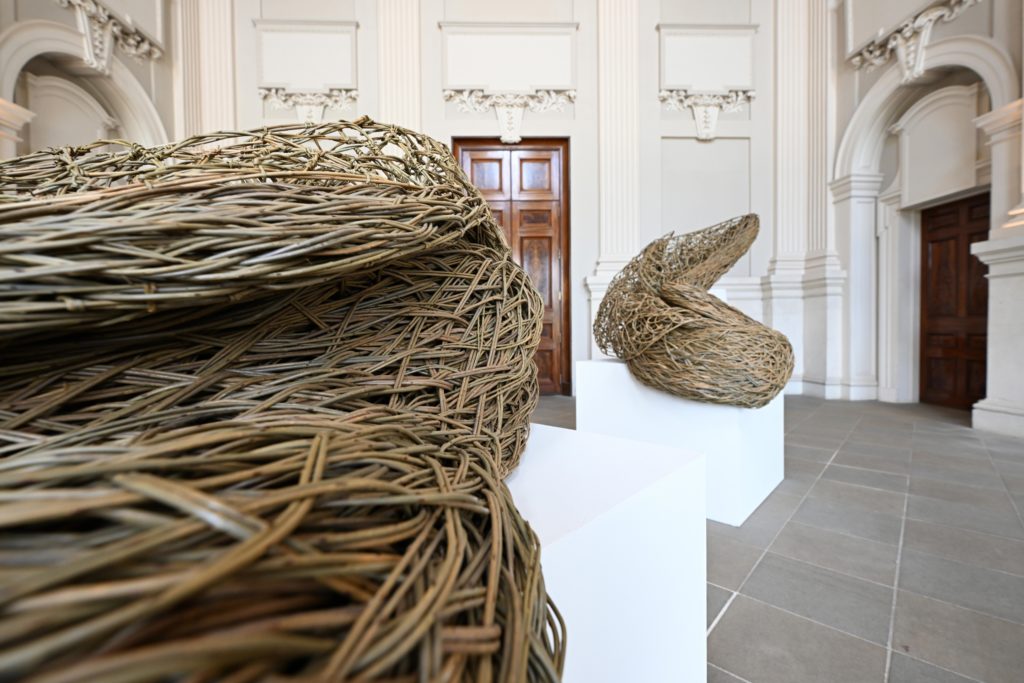
Close-up of Whispers, willow sculptor Laura Ellen Bacon’s works on plinths in the Great Hall at Beningbrough Hall. Picture: National Trust/Anthony Chappel-Ross
Laura Turner, creative producer for the National Trust, says: “I’ve been working at Beningbrough for three years, and before that it was very much a space for showing paintings, but I wanted to invite artists to respond to this space with installation pieces.
“When we were commissioning for this exhibition, we really wanted an artist we felt could respond to the Wilderness Garden, so we shortlisted four artists that specialised either in work in natural materials or had a direct connection to nature.
“We used exhibition staff and volunteers to make the final decision after each artist put forward a formal proposal, so the staff have been involved from start to finish, including the exhibition design, such as the wooden title frames.”
The final choice was Laura Ellen Bacon, who grew up on a Derbyshire fruit farm with free rein to explore and to build secret and ever more ambitious dens. “I think Laura’s sculptures will really excite and surprise our visitors,” says Turner.
“Made in response to both the Wilderness Garden and the exhibition space, this exhibition is a celebration of creativity, heritage and the natural world. It’s a chance for visitors to connect with Beningbrough’s past and present through art that speaks to the soul.”
Turner highlights the impact of Thicket, Bacon’s sculpture in the Saloon, made from 30 willow bundles. “It hugs the wall, as if pointing towards the Wilderness Garden. It’s almost as though it’s leading you to that space, but equally it feels it comes from that space,” she says.
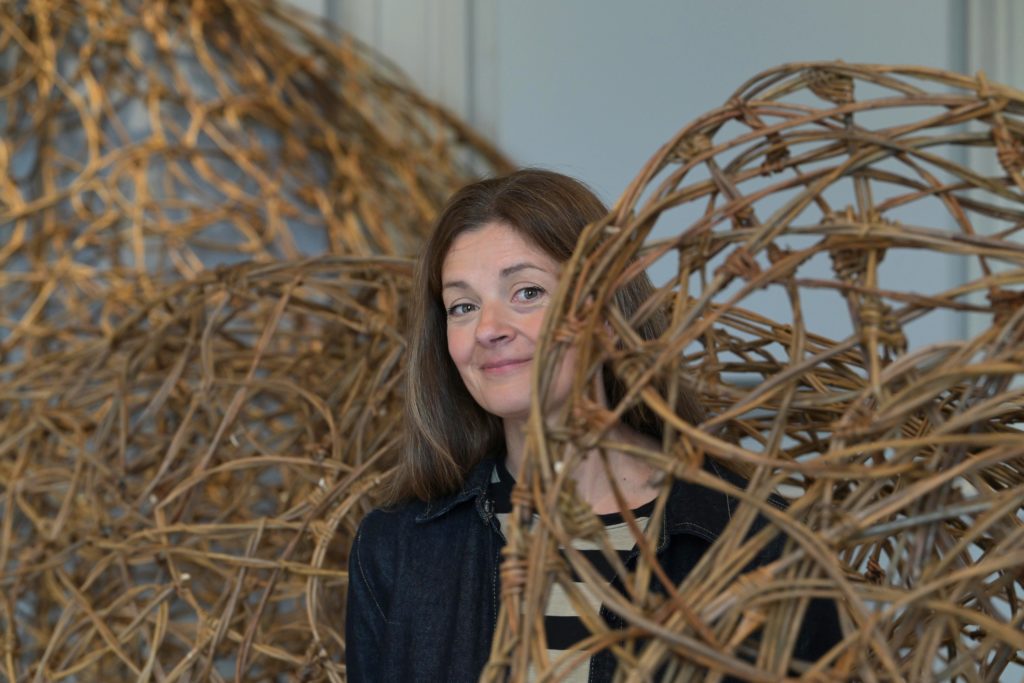
Laura Ellen Bacon with her willow sculpture Thicket in the Saloon at Beningbrough Hall. Picture: National Trust/Anthony Chappel-Ross
“I love how she has called two sculptures ‘Whispers’ because there’s something lovely about gardens whispering to you, calling to you to go out into there.”
Bacon has worked in willow for more than 20 years, developing her own technique to create ambitious forms that draw on her love of drawing and buildings, inspired by her architect father, who painted abstract works prolifically.
Her work has been exhibited at Chatsworth, the Holburne Museum in Bath, Denver Art Museum and most recently in the Chapel at Yorkshire Sculpture Park, near Wakefield (from April to September 7 this year).
She is delighted to be exhibiting at a National Trust property. “I’ve been a member of the National Trust since I was a teenager, going to so many with my [late] mum, mainly in Derbyshire,” says Bacon.
“My dad worked in the architect department for Derby County Council, where she would take him his sandwiches, and she used to say that if you listened carefully, you could hear the swish of ladies’ ballgowns on the walls, so I’ve always been interested in the idea that buildings hold things within the walls.”
As for Bacon’s answer to the opening question: “It’s up to the viewer to decide whether the garden is coming into the hall or the sculptures are leading out into the garden,” she says.
Beningbrough Hall is open from Tuesday to Sunday, 10am to 5pm, during September. For more information and further opening hours, or to plan a visit, go to: www.nationaltrust.org.uk/beningbrough.
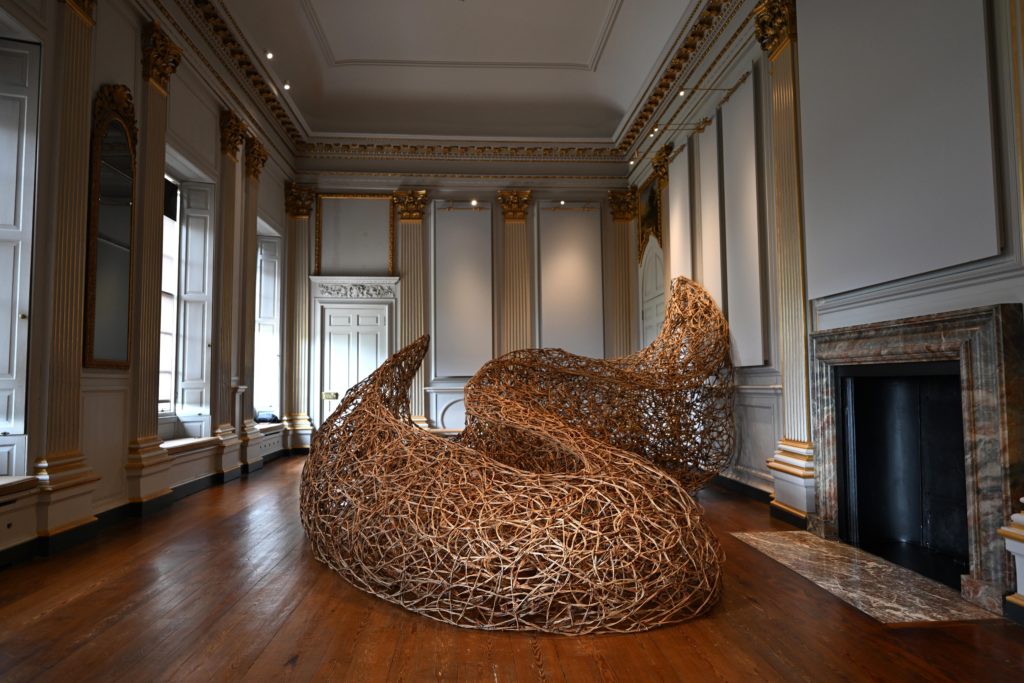
Laura Ellen Bacon’s willow sculpture Thicket, weaving its way up the Saloon wall at Beningbrough Hall. Picture: National Trust/Anthony Chappel-Ross
Did you know?
THE Reddihough Galleries on the first floor of Beningbrough Hall are named in honour of the late Mr Ian Reddihough, a passionate supporter of the National Trust charity. His legacy gift enables Beningbrough to continue to showcase high-quality art that reflects the hall’s rich history and evolving landscape.
Did you know too?
TO provide a framework for the Thicket sculpture in the Saloon, artist Laura Ellen Bacon made hundreds of simple loop structures, which are then joined together, using willow to weave and knot together. The sculptures take hundreds of hours to create.
How is willow turned into a sculpture?
“IN order for the willow to be supple enough to work with, you put the willow bundles in water for a week, which makes it more malleable to shape it,” says Laura Turner.
Musgrove Willows uses both modern and traditional techniques to harvest, sort, grade and process the willow. Different willows have a different quality, scent and appearance, Old French and Dickie Meadow among them.
